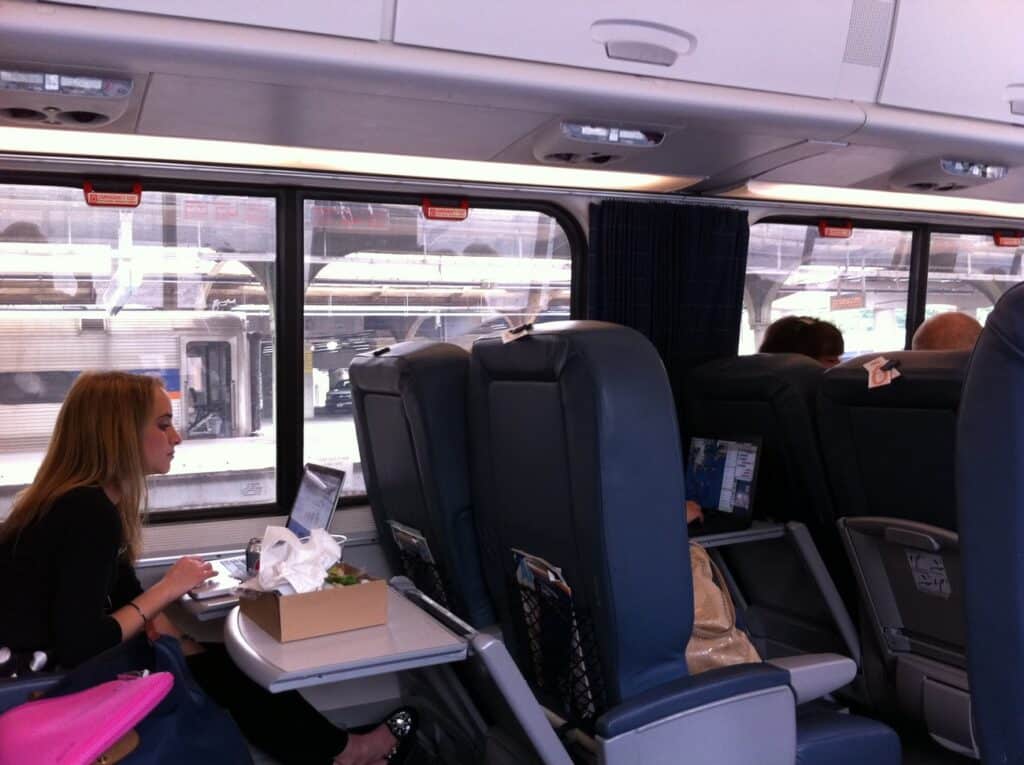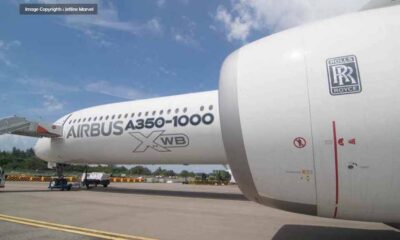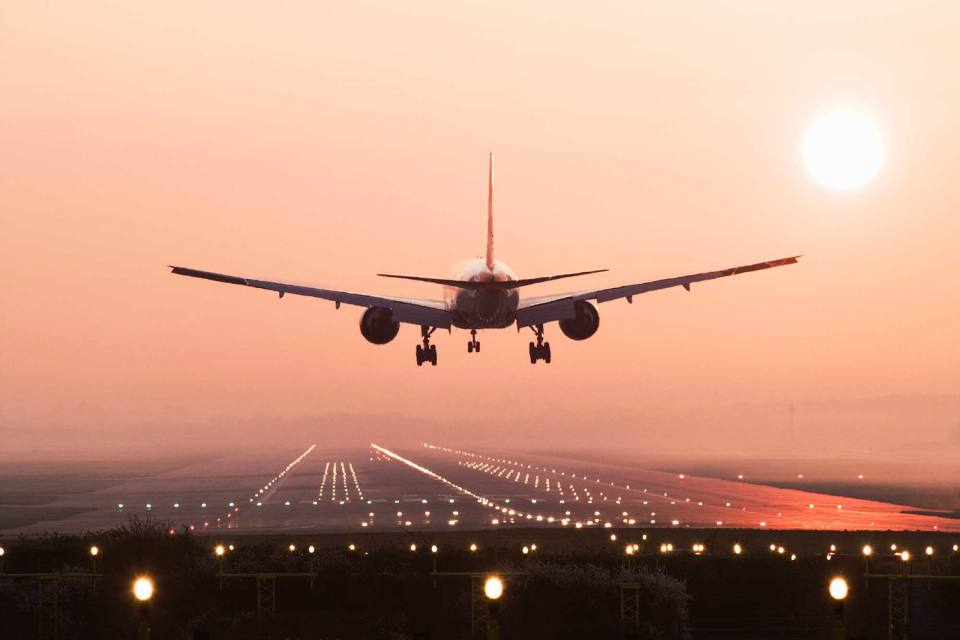Aviation
5 Travel Technology Trends in travel industry
The majority of the aviation industry is investing in technologies to attract more passengers. Check out some of the newest trends in the aviation business.

Prices are rising across the board, from food to fuel, just as people are enjoying their long-awaited summer holidays. While travel costs may be higher than usual this year, this hasn’t stopped a flood of consumers willing to spend or a wave of technological advances made by travel brands to improve the experiences of travelers.
1. Southwest Connects Passengers to Destinations Via Flight Tracking Technology
The trendsetter Southwest Airlines has joined forces with mapping expert FlightPath3D in a new partnership. As a result of the new relationship, Southwest customers will have access to a number of mobile-friendly video travel guides as well as virtual reality videos that will be included in the inflight moving map. The “Destination Reels” enable travelers to explore their destination depending on their interests for a more customized, virtual experience by using data to rank attractions and match user preferences.
The new technology also fills the gap between consumers’ experience with onboard entertainment and social, mobile content from platforms like Instagram or TikTok. Along with its relationship with Delta, FlightPath3D has agreed to supply its technology to China Airlines and Lufthansa, expanding the range of passenger experiences before they ever step off their flight.
2. Hertz Gets Boost From Tech Investments, Travel Rebound
Courtesy: Polestar Media
The development of a contemporary mobility ecosystem is the common objective of today’s travel technology. Hertz, whose fleet of rental cars from Hertz, Dollar, and Thrifty will be completely connected by the end of the year, is one of the travel companies attempting to make that ambition a reality. Hertz is placing its whole fleet onto the cloud and is already realizing the financial rewards of this decision. The organization may gain knowledge from linked auto data such as a vehicle’s position, battery charge level, and even alarms like engine warning lights.
The business has noticed advantages of telematics-equipped vehicles, such as enhanced data monitoring, more precise fuel readings, and less theft. According to Stephen Scherr, CEO of Hertz, example, recovery times after repossession are cut in half on linked automobiles, saving about $1,600 a month. As the program is expanded, the corporation intends to investigate new features to make use of telemetry data, and they are considering exploring digitization elsewhere too.
3. Coming to a Giant Airport Screen: Your Personal Flight Information
At the Detroit Metropolitan terminal, Delta has installed a “Parallel Reality” system that enables passengers to see their specific flight details on a shared overhead screen by scanning their boarding card or their face. The only people who can see their personal information are they, even if other passengers are gazing at the same board at the same time.
The use of technology eliminates one of the most annoying airport inconveniences: having to search through a sea of other passengers to find a little row on a big screen that contains information about your flight. The display panels have received excellent reaction so far, according to Delta, and the airline intends to utilize digital identity technology more widely at other airports, such as Atlanta, Los Angeles, and New York’s LaGuardia.
4. The Future of Business Travel: Supersonic Flights, Computerized Chauffeurs, Beyond
The pandemic hastened the adoption of recent technology, and one overarching tendency among the recognized technical advancements is the blurring of the lines between leisure and work through convenience. A trip between Tokyo and Seattle might take as little as 4.5 hours in the future, dramatically reducing some of the most popular executive travel routes, according to Boom and Aerospace, two businesses developing supersonic passenger planes.
Self-driving cars take the trouble out of getting transportation in foreign cities. These vehicles are currently being tested by tech and auto companies like Google and General Motors. With artificial intelligence able to handle laborious trip planning chores like hotel booking and ticket switching, robotics is becoming a developing industry for business travel. Business travellers might concentrate more on their commitments by eliminating the difficulties of trip planning.
5. Blockchain Technology Holds Potential for Travel Insurance
Blockchain is one of the most significant emerging developments in travel technology. Travel insurance is one of the newest applications for the technology that has been found. A cost-effective means to track information, blockchain is not only a highly secure mechanism to store and record data but also one that can be quickly exchanged between different parties. Blockchain is being applied to insurance products in the travel industry to automatically issue policies and carry out compensation for aircraft delays and cancellations.
Recently, German blockchain firm Etherisc unveiled Flight Delay, a service that detects delays and automates payouts on 80 airlines without requiring human verification. Because information about airline cancellations and delays is easily accessible.

Aerospace
India is set to build a central command for the Air Traffic Control system, called ISHAN

India’s air traffic growth has led to increased responsibilities for air traffic control. The Airports Authority of India (AAI) is considering centralizing air traffic control for aircraft, dividing the country into four regions. The goal is to consolidate India’s segmented airspace into a single entity to improve air traffic management (ATM) efficiency, safety, and smoothness.
Recently, the AAI invited expressions of interest to develop a detailed project report for the Indian Single Sky Harmonized Air Traffic Management (ISHAN) initiative in Nagpur. Under this plan, air traffic controllers in Nagpur would handle domestic flights flying above 25,000 feet, eliminating the need for coordination among controllers in different regions.
For domestic regional flights operating above 25,000 feet, control would shift to the central command in Nagpur. This consolidation aims to enhance airline operations, increase flight handling capacity, and reduce congestion and flight times for passengers.
Currently, the AAI provides ATM services over Indian airspace and adjoining oceanic areas, covering over 2.8 million square nautical miles. This airspace is divided into four flight information regions (FIRs) in Delhi, Mumbai, Kolkata, and Chennai, along with a sub-FIR in Guwahati.
FIRs are responsible for providing air traffic services, including weather information, visibility, and search and rescue assistance. The proposed unification under the ISHAN initiative aligns with the projected growth of the aviation industry, which anticipates a doubling of domestic passenger traffic by 2030.
Aviation
Airbus is set to increase the production rate for the A350 as demand surges

Airbus SE is set to boost production of its advanced A350 widebody jet as it capitalizes on rising demand for long-distance travel and wide-body aircraft, amidst the ongoing crisis affecting its competitor Boeing due to issues with the B737 Max.
The surge in orders for Airbus’s A350 aircraft has instilled confidence in the company, prompting them to ramp up production rates. This move is particularly advantageous as Boeing continues to grapple with production quality issues surrounding its 787 and 777x aircraft.
In 2024 alone, Airbus has received 137 orders for the A350, signaling a need to expand manufacturing capabilities to meet customer demands. With 1,277 orders received and 592 aircraft delivered as of April 2024, Airbus is poised to fulfill pending deliveries efficiently.
The European aircraft manufacturer announced plans to increase production of A350 jets to 12 per month by 2028, surpassing earlier projections aiming for 10 per month by 2026. This decision was disclosed alongside the company’s first-quarter figures.
The Asian market is proving lucrative for the A350, with significant orders from airlines like Indigo and Air India, totaling nearly 70 aircraft commitments for the future. Meanwhile, Airbus is progressing with its A220 and A320 programs, aiming for a monthly production rate of 14 and 75 aircraft, respectively, by 2026. Additionally, the long-range A321XLR is anticipated to commence service in the third quarter of the current year.
In contrast, Boeing has been compelled to scale back production due to regulatory pressures aimed at enhancing factory processes. While Airbus anticipates a positive market outlook, Boeing continues to face challenges with FAA certification and quality approvals, resulting in ongoing delays for its 737 Max and 777x models.
Financially, Boeing reported a significant cash burn of $3.9 billion in the first quarter, leaving it with $7.5 billion in cash and short-term securities by the quarter’s end, down from $16 billion at the beginning of the year. Consequently, Boeing’s stock has plummeted by 38% in the year so far, contrasting with Airbus’s 14% gain, marking Boeing’s lowest performance in over a year.
For a full listing including details on customers and regions, as well as historical data for the previous year, go to the download section below.
- March 2024 deliveries: 63 deliveries to 32 customers
- March 2024 gross orders: 137
- 2024 deliveries to date: 142 deliveries to 45 customers
| Single-Aisle | A300/A310 | A330 | A340 | A350 | A380 | TOTAL | |
|---|---|---|---|---|---|---|---|
| Total Orders | 19470 | 816 | 1774 | 377 | 1277 | 251 | 23965 |
| Total Deliveries | 11705 | 816 | 1598 | 377 | 592 | 251 | 15339 |
| Aircraft in Operation | 11007 | 271 | 1482 | 202 | 591 | 234 | 13787 |
Aviation
All passengers killed in plane crash, after pilot let his children to control the plane

When boarding a plane, passengers entrust their safety to the skilled hands of the pilot. However, tragedy struck when one of the flight ended in disaster as all passengers lost their lives in a horrific plane crash.
In 1994, during a flight from Moscow to Hong Kong, tragedy struck as an Aeroflot relief pilot made a fateful decision. In a move that would have devastating consequences, the pilot invited his own children into the cockpit to play with the controls. Little did anyone know, this seemingly innocent gesture would lead to the loss of all 75 lives aboard the aircraft.
It was a seemingly innocent act that led to catastrophic results. The relief pilot, Mr. Kudrinsky, invited his two children, Yana, 12, and Eldar, 15, into the cockpit during the late hours of the night. Little did anyone know, this simple gesture would set off a chain of events that would end in tragedy.
Once in the cockpit, the children were allowed to sit in the captain’s chair and play with the controls, unaware that they should have been disabled as the plane was in autopilot mode.
Eldar, perhaps in a moment of curiosity or innocence, held the control column down for a mere 30 seconds. Yet, in those brief moments, the autopilot disengaged, thrusting the aircraft into manual control.
By the time the pilots regained their seats and attempted to regain control, it was too late. Despite their efforts to pull the plane out of a dive, they overcorrected, causing the flight to climb almost vertically, ultimately stalling it.
Final moment Flight 593 crash
In the final moments, as the pilots struggled to stabilize the aircraft, Flight 593 crashed into the Kuznetsk Alatau Mountain range in southern Russia, completely obliterating the plane and claiming the lives of everyone on board.
Investigations revealed a chilling truth: there was no evidence of technical failure. Instead, the crash was attributed to the unthinkable decision to allow inexperienced hands to manipulate the controls of a commercial aircraft.
The black box recording captured the harrowing sequence of events, providing a grim reminder of the human cost of a lapse in judgment. In just over two minutes, the lives of all on board were tragically short, leaving behind a legacy of sorrow and unanswered questions.






























